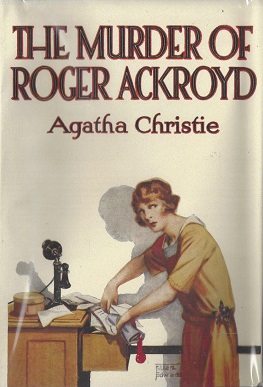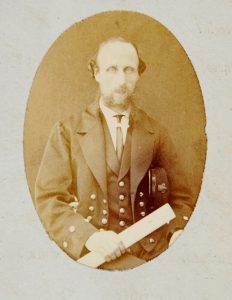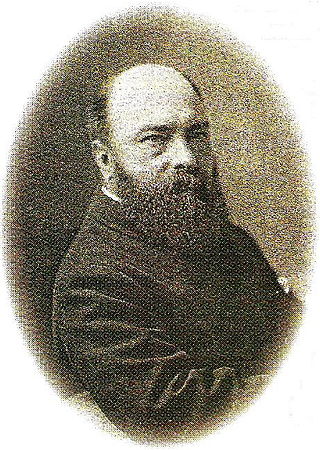
Dame Agatha Mary Clarissa Christie, Lady Mallowan, was an English writer known for her 66 detective novels and 14 short story collections, particularly those revolving around fictional detectives Hercule Poirot and Miss Marple. She also wrote the world's longest-running play, the murder mystery The Mousetrap, which has been performed in the West End of London since 1952. A writer during the "Golden Age of Detective Fiction", Christie has been called the "Queen of Crime"—a moniker which is now trademarked by her estate—or the "Queen of Mystery". She also wrote six novels under the pseudonym Mary Westmacott. In 1971, she was made a Dame (DBE) by Queen Elizabeth II for her contributions to literature. Guinness World Records lists Christie as the best-selling fiction writer of all time, her novels having sold more than two billion copies.

Isleworth is a suburban town located within the London Borough of Hounslow in West London, England. It lies immediately east of the town of Hounslow and west of the River Thames and its tributary the River Crane. Isleworth's original area of settlement, alongside the Thames, is known as 'Old Isleworth'. The north-west corner of the town, bordering on Osterley to the north and Lampton to the west, is known as 'Spring Grove'.

Sir David Courtney Suchet is an English actor known for his work on stage and in television. He portrayed Edward Teller in the television serial Oppenheimer (1980) and received the RTS and BPG awards for his performance as Augustus Melmotte in the British serial The Way We Live Now (2001). International acclaim and recognition followed his performance as Agatha Christie's detective Hercule Poirot in Agatha Christie's Poirot (1989–2013), for which he received a 1991 British Academy of Film and Television Arts (BAFTA) nomination.

Agatha Christie's Poirot, or simply Poirot, is a British mystery drama television programme that aired on ITV from 8 January 1989 to 13 November 2013. The ITV show is based on many of Agatha Christie’s famous crime fiction series, which revolves around the fictional private investigator, Hercule Poirot. David Suchet starred as the fictional detective. Initially produced by LWT, the series was later produced by ITV Studios. The series also aired on VisionTV in Canada and on PBS and A&E in the US.
Richmond is a town in south-west London, 8.2 miles (13.2 km) west-southwest of Charing Cross. It stands on the River Thames, and features many parks and open spaces, including Richmond Park, and many protected conservation areas, which include much of Richmond Hill. A specific Act of Parliament protects the scenic view of the River Thames from Richmond.

The Murder of Roger Ackroyd is a detective novel by the British writer Agatha Christie, her third to feature Hercule Poirot as the lead detective. The novel was published in the UK in June 1926 by William Collins, Sons, having previously been serialised as Who Killed Ackroyd? between July and September 1925 in the London Evening News. An American edition by Dodd, Mead and Company followed in 1926.

Captain Arthur J. M. Hastings, OBE, is a fictional character created by Agatha Christie as the companion-chronicler and best friend of the Belgian detective, Hercule Poirot. He is first introduced in Christie's 1920 novel The Mysterious Affair at Styles and appears as a character in seven other Poirot novels, including the final one Curtain: Poirot's Last Case (1975), along with a play and many short stories. He is also the narrator of several of them.

James Henry Pullen (1835–1916), also known as the Genius of Earlswood Asylum, was a British savant, who possibly had aphasia.

The Royal Earlswood Hospital, formerly The Asylum for Idiots and The Royal Earlswood Institution for Mental Defectives, in Redhill, Surrey, was the first establishment to cater specifically for people with developmental disabilities. Previously they had been housed either in asylums for the mentally ill or in workhouses.

Greys Court is a Tudor country house and gardens in the southern Chiltern Hills at Rotherfield Greys, near Henley-on-Thames in the county of Oxfordshire, England. Now owned by the National Trust, it is located at grid reference SU725834, and is open to the public.

Twickenham is a constituency in Greater London represented in the House of Commons of the UK Parliament since 2019 by Munira Wilson of the Liberal Democrats.

John Langdon Haydon Down was a British physician best known for his description of the genetic condition now known as Down syndrome, which he originally classified in 1862. He is also noted for his work in social medicine and as a pioneer in the care of mentally disabled patients.

Florin Court is an Art Deco / Streamline Moderne residential building on the eastern side of Charterhouse Square in Smithfield, London.

Charterhouse Square is a garden square, a pentagonal space, in Farringdon, in the London Borough of Islington, and close to the former Smithfield Meat Market. The square is the largest courtyard or yard associated with the London Charterhouse, mostly formed of Tudor and Stuart architecture restored after the London Blitz. The square adjoins other buildings including a small school. It lies between Charterhouse Street, Carthusian Street and the main Charterhouse complex of buildings south of Clerkenwell Road. The complex includes a Chapel, Tudor Great Hall, Great Chamber, the Barts and The London School of Medicine and Dentistry and a 40-resident almshouse.

Teddington is an affluent suburb of London in the London Borough of Richmond upon Thames. Historically an ancient parish in the county of Middlesex and situated close to the border with Surrey, the district became part of Greater London in 1965. In 2021, The Sunday Times named Teddington as the best place to live in London.
The Down's Syndrome Association (DSA) is a British charity which describes itself as being the only organisation in the United Kingdom that focuses solely on all aspects of living successfully with Down's syndrome.

Rowland Plumbe, also known as Roland Plumbe, was an English architect, famous for being the author of many residential schemes across London, many being considered the first examples of the Victorian Garden City.

Kelly & Birchall, a partnership between Edward Birchall and John Kelly (1840–1904), was an architectural practice based in Leeds, England, from 1886 to 1904 and specialising in churches in the Italianate and Gothic Revival styles.

Normansfield Hospital is a Grade II* listed building in Teddington in the London Borough of Richmond upon Thames, England. It was built as a facility for patients with an intellectual disability and included a theatre. It now houses the national office of the Down's Syndrome Association, and the Langdon Down Museum of Learning Disability.

Richmond Opera is an opera company based in Richmond, London in the UK. Originally founded as Isleworth Baroque in 2004, Richmond Opera performs a fully-staged opera each year at the Normansfield Theatre in Teddington, along with concerts, semi-staged productions, and workshops.





















